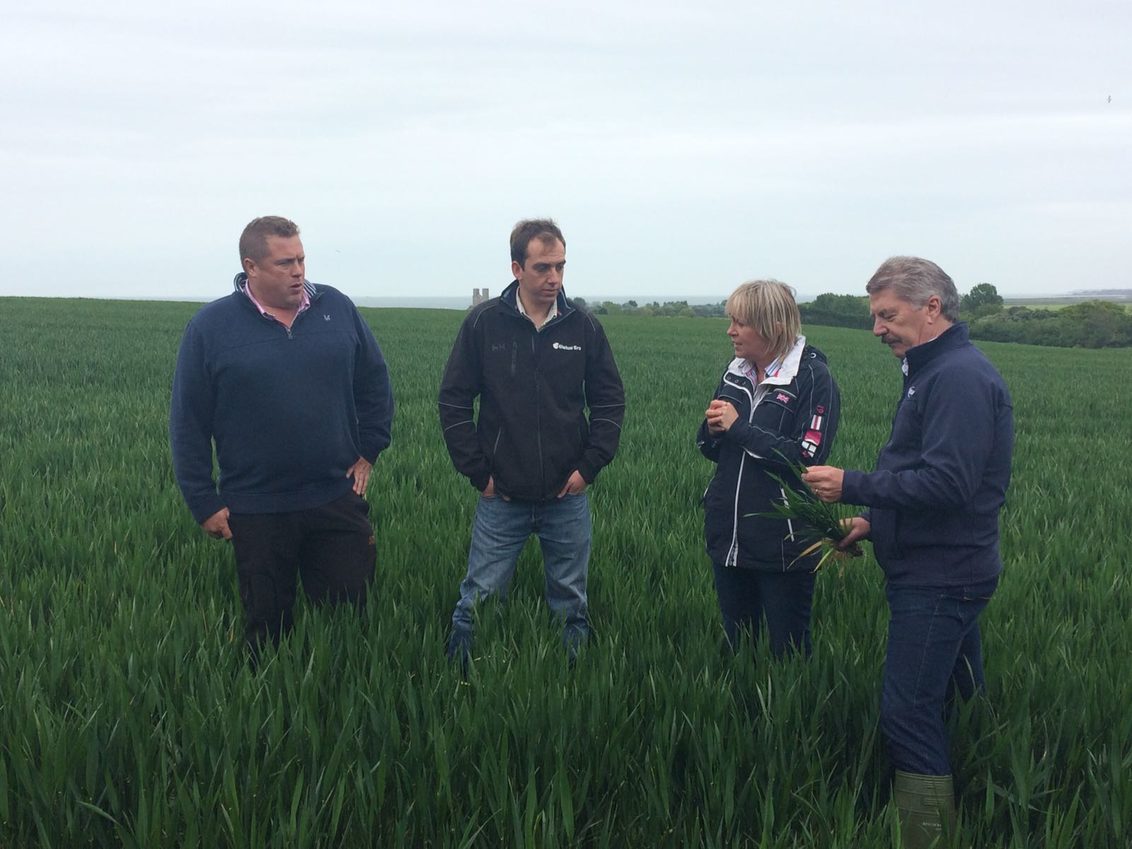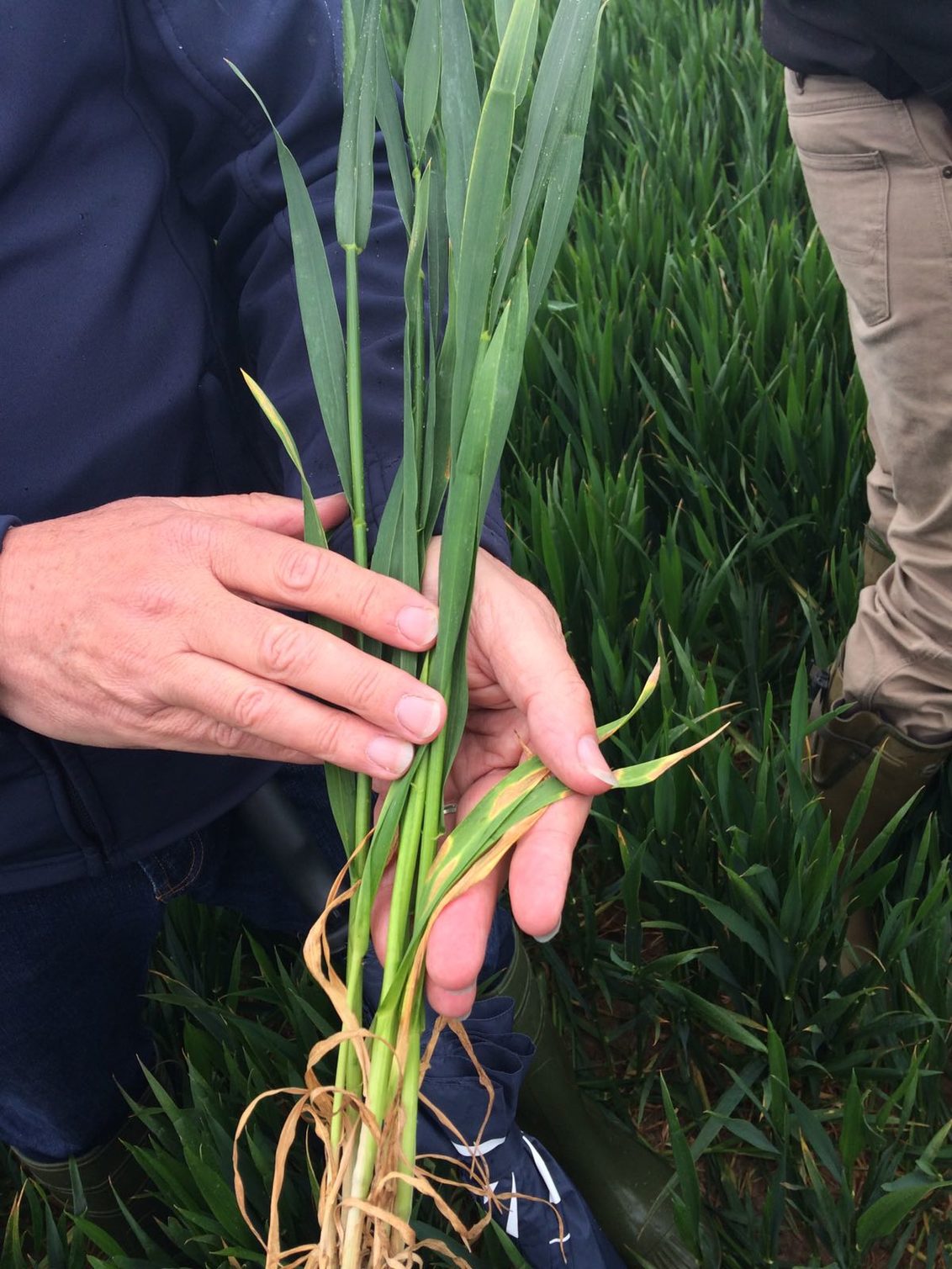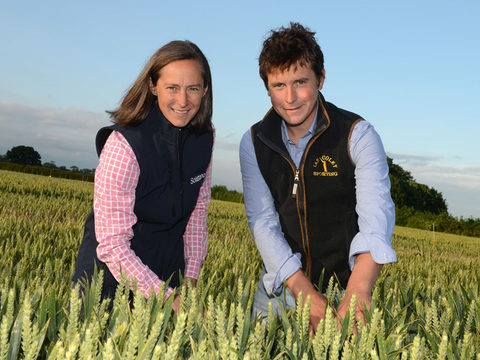Cereals Disease Force – round three, Kent

Syngenta has teamed up with Farmers Weekly to deliver #DiseaseForce, bringing you the latest insight on crop development and cereal disease updates from three regions across England.
The third and final round of three on-farm visits saw the Syngenta team join the farmers and their agronomists, as well as independent experts from NIAB TAG, in seeing the progress since the last visit in mid-April.
Visit one – Antony Redsell, Brook Farm Partnership, Kent

At the last visit to Brook Farm in April crops were struggling, with only 2mm of rain recorded between our first visit in March and the second visit.
However, in the last three weeks the situation has changed again. With 8mm of rain recorded within the last three weeks, and more predicted for this week, things are looking positive with some wheats predicted to hit their yield potential despite the poor conditions early on.
After our last visit, T1 spray plans evolved again from what had initially been planned, with Antony and his agronomist James Rimmer of CCC agronomy, deciding to protract their timings between T0 and T1 sprays from three weeks to four, in order to cover an inch of leaf two.
Although the weather conditions have allowed flexibility with timings, they have not cut back rates, and this remains true for T2 decisions. Although disease pressures have generally been relatively low at Brook Farm, James is right to point out that you can’t farm in hindsight, and we can’t be certain what’s around the corner.

T2 sprays are planned to start this week, with Syngenta’s new fungicide ELATUSTM ERA being trialled for the first time in Crusoe. Rusts are much more of a concern this year over Septoria. Although T0 and T1 sprays have done a good job of drying up the disease so far, the dynamic nature of brown rust means they can’t afford to let it get on top of them at this critical T2, yield-bearing time.
To catch up on the third and final visits on the other two case study farms, follow the links below:





